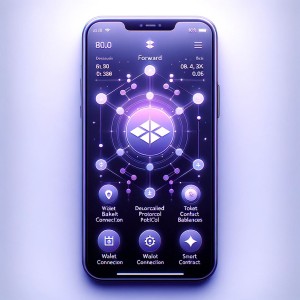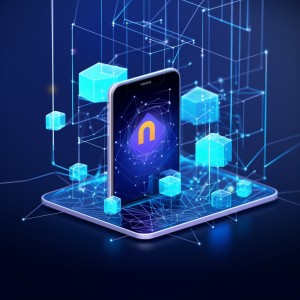Cryptocurrency was originally conceived as a form of decentralized money that no central bank or government could control, but since the birth of Bitcoin in 2009 it has evolved far beyond that vision.
These days, crypto represents a global movement that’s driven by the thousands of dedicated communities that have sprung up around its most innovative projects. We see it everywhere in the industry, from the meme coins that were only ever meant to be jokes, to the formation of decentralized autonomous organizations or DAOs that are forging the future of decentralized finance.
Crypto’s community spirit is perhaps best illustrated by the dedicated supporters of meme coins such as Dogecoin and its spinoff, Shiba Inu Coin. While these tokens were dismissed as jokes at the time they first became prominent, they refused to die and have since established themselves among the industry’s top digital assets, thanks to strong backing from the communities that emerged around them.
Meme coins boast some of the most passionate fans in crypto, and they have fostered the growth of communities that celebrate the humorous origins of their favorite tokens. One thing community members have in common is their shared belief in the potential of crypto, and this has helped to drive significant adoption of Dogecoin and Shiba Inu.
DAOs Drive Decision-Making
The communities behind many crypto projects have become more organized with the emergence of DAOs, which provide a structured framework through which supporters can collectively make decisions. DAOs are often created for communities to decide how a crypto project’s treasury should be used, but their decisions aren’t restricted only to financial matters – these days, they typically also guide the future direction the project takes, with members voting on new rules, initiatives and more.
The Polkadot community has recently exemplified this idea with its work towards Polkadot’s first meme coin, $DED. “The $DED coin is really a testament to what can be accomplished with community members at the helm. The dedicated Polkadot community have built this from the ground up in a completely permissionless, decentralized, and transparent way while bringing back the fun and whimsy that made many meme coins successful in their own right,” stated Giotto De Filippi, DOT Activist and $DED coin enthusiast.
DAOs get their strength by mobilizing the community of supporters and contributors behind each project. In doing this, they’re able to create a system through which anyone can submit proposals for the entire community to vote on. Votes on topics ranging from which charities to support, what features to enable next, and which offshoot projects should receive funding from the treasury are commonly held by crypto communities.
Innovation, Transparency & Adaptability
The democratic decision-making processes in community-driven governance ensure greater inclusivity and the consideration of more diverse perspectives that can aid significantly in a project’s evolution, boosting innovation.
Andrea Lerdo, Managing Director at Palm Foundation, said that when the community feels genuinely involved in decision-making, it fosters a deeper sense of ownership and commitment to its success. Palm Foundation is a DAO that drives the development of Palm Network, and its primary goal is to empower traditionally overlooked creative communities in the blockchain industry. Powered by the $PALM token, the Palm Network is all about enabling creators and artists to mint more energy-efficient NFTs with lower gas fees and rapid transaction finality. The project has been quite successful, with more than 3 million NFTs minted by creatives on the Palm network thus far. It has grown into a sizable community, with more than 1 million wallet addresses and growing.
“The transparency inherent in decentralized systems, especially with blockchain technology and smart contracts, further augments the community’s impact,” Lerdo said. “Every stakeholder can see and verify the decision-making process, enhancing trust and accountability. This openness not only attracts more participation but also instills confidence in the project’s direction among both current and potential members.”
Besides innovation and transparency, community-led projects are also more adaptable, Lerdo believes. She said decentralized governance models are inherently flexible, which allows projects to quickly evolve in response to any challenges or new opportunities. “This agility is crucial in the fast-paced, ever-changing world of digital technologies, where being able to pivot or adapt rapidly can be a significant advantage,” she said.
Community-Led Products
Within crypto ecosystems, the voice of the community has never been more relevant, and that holds true for almost every project, even those without an official DAO. Take Nexo, which started out back in 2018 as a pioneering lending platform, introducing the concept of crypto credit lines to the industry. The platform experienced rapid growth and quickly spawned an entire ecosystem of crypto finance products, with a wallet and exchange platform that allows users to buy, sell, trade and borrow against their digital assets. At the last count, Nexo said it has grown its user base to more than four million worldwide.
Nexo understands the concept of catering to its community, and its users have proven to be instrumental in its decision to rethink the four timeless ways people use money – which Nexo defines as investing, earning, spending and borrowing. Elitsa Taskova, Chief Product Officer at Nexo, said that while the customer was always king in Web2, with Web3 it’s the community that reigns instead.
“In the case of projects structured as a DAO, this entails community participation in every stage of the process, voting on key proposals, grants, treasury management, and protocol upgrades,” Taskova explained. “But crypto projects that are traditionally incorporated can also successfully use this playbook to engender more engaged, motivated, and cohesive communities.”
This is exactly what Nexo did over the last year, remodeling its products around the four essential ways people use money, Taskova explained. “[People use money] to invest, earn, spend and borrow,” she said.
All told, it transformed an incredible 24,500 user requests from 22,357 individuals into new features and functionality across each of its main products. “This created a community-driven offering that directly reflects users’ needs,” Taskova continued. “We refined every little bit so that it fits into people’s everyday lives and solves a specific problem they’ve previously experienced.”
On the investing side, Nexo launched a lighter version of the Nexo Exchange to enable users to trade on the go, while introducing futures trading, dollar-cost averaging and high-performance crypto bundles, following user requests.
Nexo also gave its users a more reliable way to earn a passive income, with an industry-leading 16% APY on stablecoins, while adding support for more crypto assets on its popular Nexo Card, which allows users to spend crypto directly. Other community-inspired innovations include new tax reporting tools, and the introduction of low-interest borrowing.
DeFi’s Future Dictated By Users
Communities are also playing a pivotal role in the evolution of DeFi, with DAO-based voting mechanisms influencing the strategies of popular protocols such as Uniswap, MakerDAO and Synthetix. In the case of Uniswap, a controversial vote earlier this year went against the wishes of its developers. The team behind Uniswap proposed introducing a protocol fee for liquidity providers, but the community voted to reject the idea, and the developers had no choice but to accept the wishes of the majority.
Meanwhile, MakerDAO’s growth strategy has seen it diversify into traditional assets as well as crypto at the direction of its community. In a recent development, MakerDAO added a new real-world asset vault called BlockTower Andromeda, which will invest over $1.2 billion into short-term U.S. Treasury bonds. The move followed a community vote, where the majority deemed fit to diversify the assets backing MakerDAO’s $5 billion market cap stablecoin, DAI.
As for Synthetix, its community voted this year to transfer customer funds from the original version of its protocol to its latest iteration, Synthetix v2. The decision highlights how communities are even shaping future platform updates, which was something that was traditionally decided by developers alone.
“The primary motivation is to enforce sunsetting of outstanding positions in PerpsV1 in the least intrusive manner, leaving enough time for accounts with existing positions to close their positions,” the proposal read.
What About The Downsides?
Although Palm Foundation’s Lerdo speaks for one of the crypto industry’s more successful DAOs, she admits that there are some tradeoffs versus the centralized governance model. In particular, one of the main challenges projects must overcome is voter apathy. Some projects struggle to engage a wide enough array of participants in the decision-making process, she said.
“Factors such as the complexity of issues, lack of incentives and information overload can lead to low participation rates, leaving important decisions to a small and possibly unrepresentative portion of the community,” Lerdo said.
Another well publicized risk of DAO-based governance is that key votes can be manipulated by a minority that has more significant resources. According to Lerdo, this is especially true with communities that utilize a fairly basic token-based voting system where voting power correlates directly with the number of tokens people hold. “This can sometimes lead to decisions that favor the interests of a few rather than the broader community,” she warned.
Finally, Lerdo conceded that decentralized governance is sometimes less efficient than centralized models. The problem is that ideas and proposals can be debated for a long time until a consensus is reached. This is especially true for larger and more diverse communities, Lerdo pointed out, adding that “it can be time consuming and may lead to delays in decision-making, causing challenges in situations requiring swift action.”
Community Empowerment Is A Growing Force
Such challenges cannot be ignored, but it has become clear that the crypto industry is largely in favor of decentralized governance models. As we enter 2024, community empowerment is a rising trend that’s likely to shape the crypto industry going forward.
More than ever before, the future of crypto projects is being dictated primarily by their users, and most will agree this is a positive development for an industry that prizes decentralization. After all, communities serve as the lifeblood of every single blockchain, protocol and dApp. Without an enthusiastic user base, no crypto project would stand the test of time, and so it’s only right that these communities have their say.
“Crypto’s strength lies in its ability to remove barriers between platforms and their users and grant everyone the right to transact and interact freely,” Nexo’s Taskova said. “In 2024, the crypto companies and projects that embody this ethos – placing community at their core – are the ones that will thrive.”





